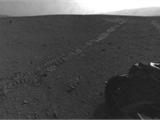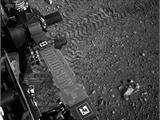Curiosity rover measures 2% water content in Martian soil
The UK's Guardian reported in its latest issue that the Curiosity rover of the U.S. National Aeronautics and Space Administration (NASA) has discovered water in the Martian soil, but these waters cannot be directly removed, but attached to other minerals in the soil in the form of water molecules.
Currently, researchers at NASA have published five related research papers in the journal Science. According to Laurie Leshin, the main author of these papers and Dean of Rensselaer Polytechnic Institute, although these waters are not liquid, if you use evaporative collection methods for extraction, you will find that their reserves are not small.
According to the introduction, "Curiosity" placed collected soil samples in an oven under its belly and raised the temperature to 835 degrees Celsius, so that the water in the soil could fully evaporate. After collecting and measuring, it was found that the water content in the sample reached 2%. Simply put, this result is equivalent to about 2 pints (approximately 1140 ml) of water contained in one cubic foot (approximately 0.03 cubic meters) of Martian soil.
At the same time, the test results also showed that, along with rising temperatures, what diffused from inside the soil included not only water, but also sulfur dioxide, carbon dioxide and oxygen.




